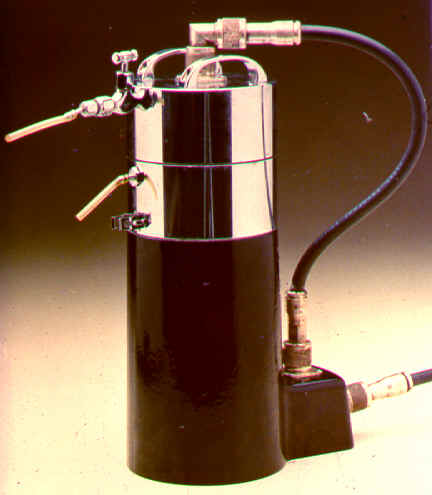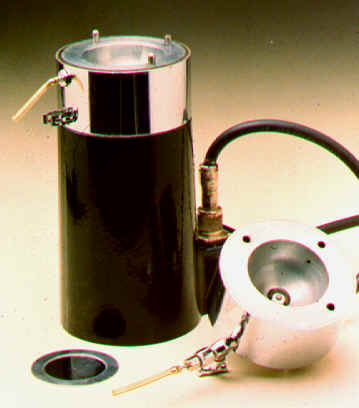Early Commercial 4 pi Gas Flow Proportional Counter (ca. 1955)


This example of a 4 pi gas flow proportional counter (RCL Model No. 10202) was manufactured sometime around 1955 by Radiation Counter Laboratories of Skokie, Illinois, one of the first companies to specialize in instrumentation for radiation detection and measurement. The manufacturer noted that this unit was "based on the Chalk River design." Although primarily employed as a proportional counter, it could also operate in the geiger-mueller region. When operated as a proportional counter, pure methane was employed as the counting gas—the operating voltages on the alpha and alpha plus beta plateaus were ca. 2800 and 4100 volts respectively. When operated as a geiger-mueller counter, a helium-isobutane mix was used as the counting gas and the operating voltage was approximately 1350 volts.
Overall dimensions: 12.25" high and 8" wide
Weight: 25 pounds
The sample was placed on the center of a thin aluminized mylar conducting film (see disk on lower left of photo on the right) that served as a support. The support and sample were then sandwiched between two hemispherical chambers (2.5" diameter) to provide a 4 pi geometry. The anodes were small stainless steel loops.
Such counters worked best if the sample emitted beta particles with energies above 300 keV or so. Betas with lower energies that were heading towards the lower chamber would experience too much attenuation when they traversed the supporting film.
Donated by Ron Kathren.
References
- Mann, W.B., and Seliger, H.H., Preparation, Maintenance, and Application of Standards of Radioactivity, NBS Circular 594, 1958.- general information about 4 pi counters.
- Radiation Counter Laboratories, Inc. Radiation Detectors Catalog, no date.
